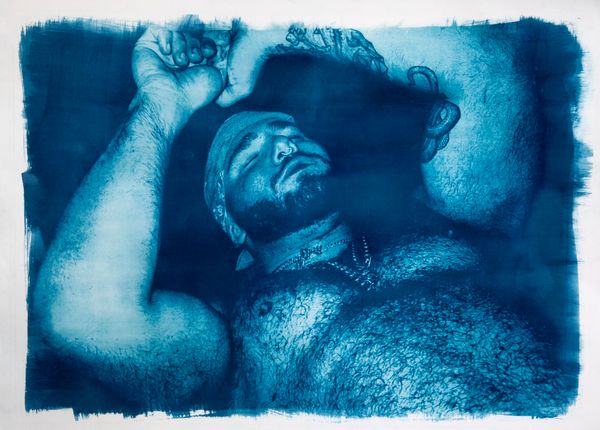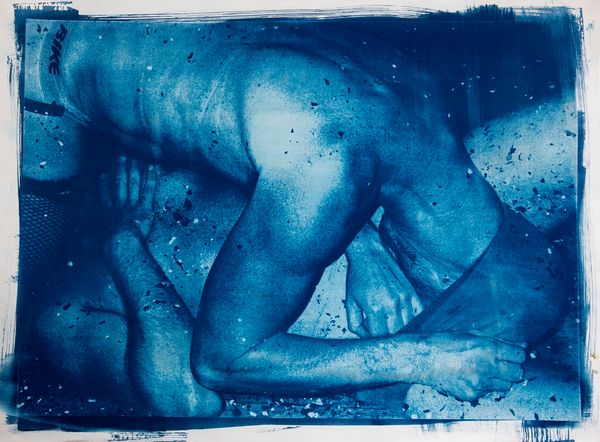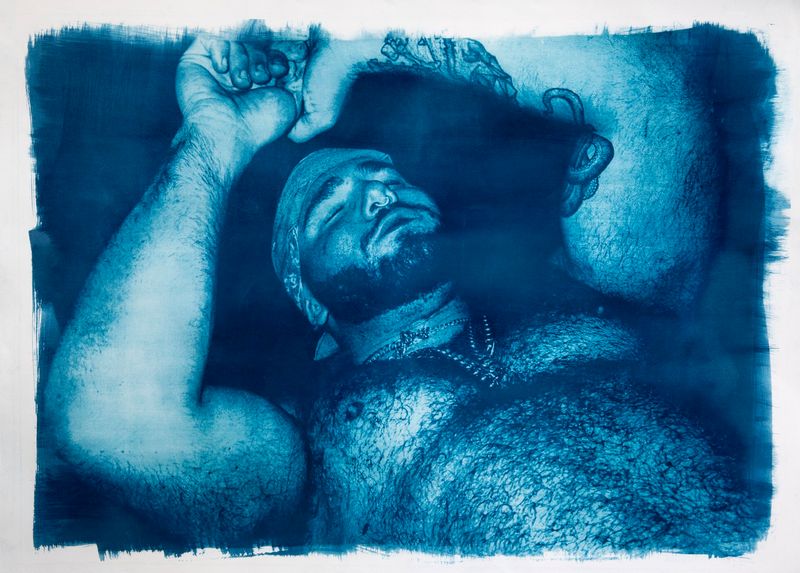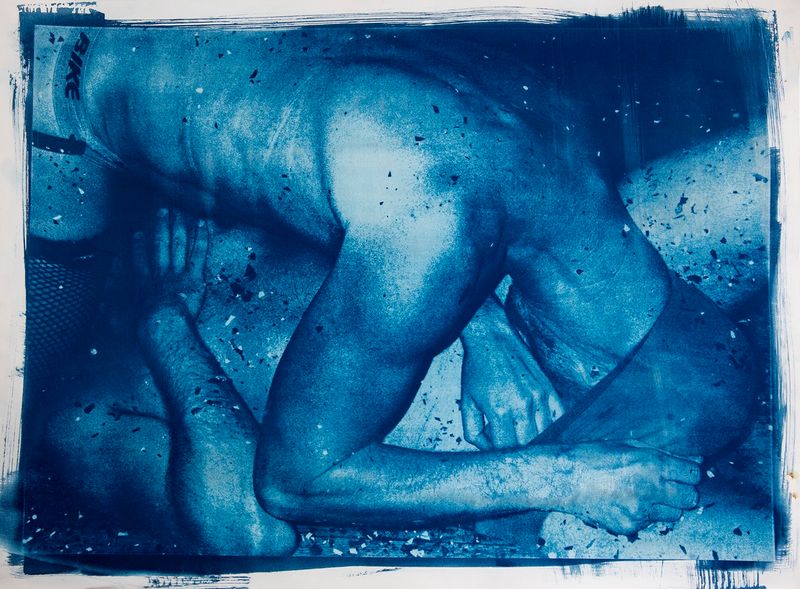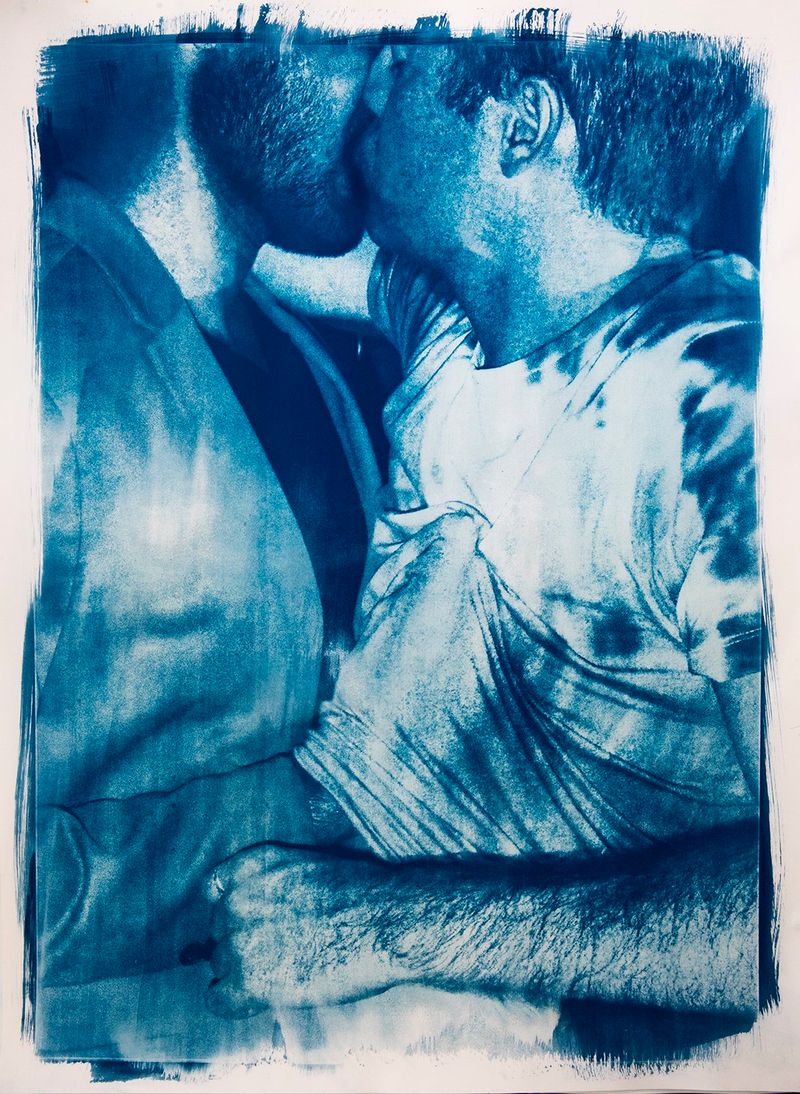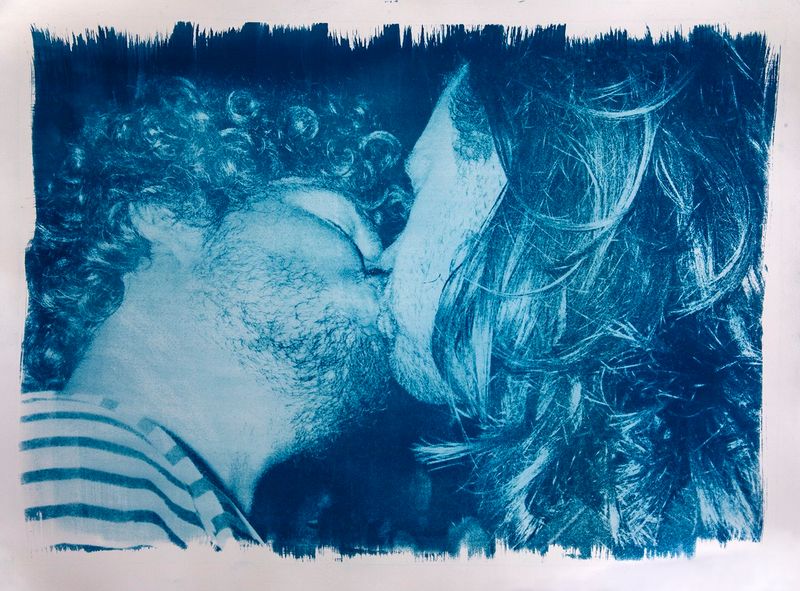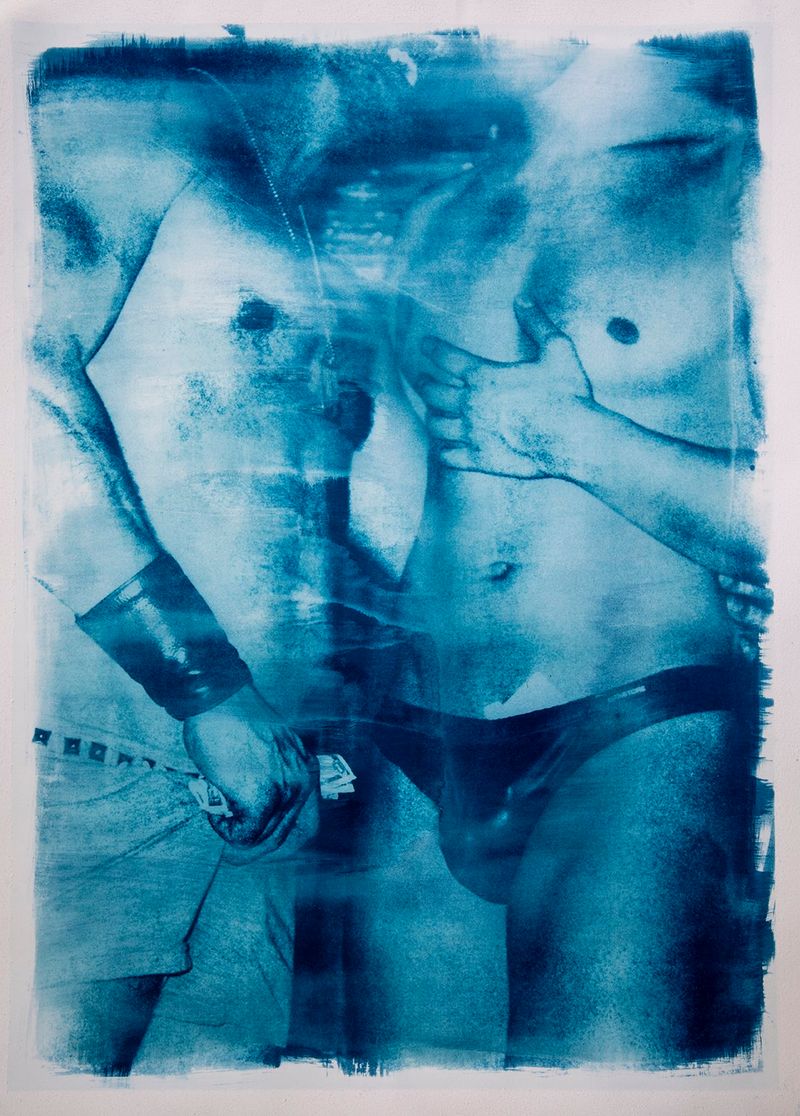A Blueprint for Living
-
Dates2023 - 2024
-
Author
- Location London, United Kingdom
A blueprint for living is a way of celebrating our present while acknowledging the hardship and persecution that queer people still quest to overcome. To understand queer joy, we must also understand it as hard won.
The work explores the intersections between photographic process, colour, technology, and history to present a queer blueprint for happiness, a blueprint that has been conspicuous in its absence.
Queer life is celebrated and embraced, and history is edited through both historical alternative photographic processes, interactive elements, and makes use of AI technology. The work pays heed to the legacy of political oppression and fear mongering against queer people, as well as the long shadow of the AIDS crisis and legislation such as Section 28 – elements that propagated shame and secrecy, impacting generations of queer people.
In this country, Gen–Z are the first generation to see queer elders out in the open, a generation freed by PREP may be able to imagine a world where queerness does not necessarily equate with struggle, largely because there is an alternative model to follow – created by the buffer generation after the AIDS crisis. That bridge generation, however, of which the artist is a part, will never be liberated from that collective trauma.
This show is an attempt by the artist to reframe that trauma, and forms the beginnings of a larger project. Using Adam’s own images gathered from many years of nights spent sweating and dancing at underground queer clubs and bars, these spaces are brought into the daylight of the gallery wall and out of the dark. While clubs were once seen as spaces where disease and subversion thrived, this show celebrates the freedom of a queer existence without barriers – these spaces are our churches, our community centres, our beating heart, where we meet, find love, find ourselves. In recent years, these spaces have increasingly found themselves under threat, in an insidious attack on queer culture that reflects the broader global climate of regression. This series is both a nod to the past, a defiant celebration, and a warning against apathy.
The show’s title is both an ode to Derek Jarman’s era-defining work, Blue, where Jarman’s degradation of sight as a result of AIDS is framed by the colour blue, and an appropriation of the colour of the conservative party – the party responsible for Section 28, the first piece of anti LGBT+ legislation this country experienced in a century. The medium too is carefully chosen, with the simple cyanotypes being one of earliest photographic mediums ever discovered, easily identifiable by their vivid Prussian blue colour and subsequent popularization use as “blueprints”.
These cyanotypes, or “blueprints” for living (not dying), require UV light to develop – the images are created both in direct sunlight, and with UV black light bulbs, as used by numerous clubs to check wrist entry stamps. This particular process was also often used as an accessible means of categorization and documentation of nature, as seen in Anna Atkins’ work (Photographs of British Algae: Cyanotype Impressions, 1843 – the first photobook ever created). These are one-off contact prints, created by direct physical touch between the sensitized paper and the image negative – a nod to the contact and exchange between queer bodies that was once so feared. Cyanotype chemistry also contains cyanide, the poison used to exterminate queer people during the Holocaust. By referencing this medium, we are creating a an alternative past, where queer lives were documented, and deemed “natural” – a protest against our collective absence from the history books and subsequent alienation.
Throughout the project, technology melds with tradition. Some pieces encourage viewer interaction, with thermochromic dyes concealing latent images of tight crops of queer bodies, requiring the warmth of human touch to be revealed – an action that alludes to the avoidance of contact and fear of contagion at the height of AIDS.
Polaroids also appear symbolically – a photographic format commonly used to exchange queer imagery when homosexuality and queer identities were still criminalized. Polaroids would be traded under shop counters and were untraceable; created behind closed doors without the intervention and oversight of the photographic lab. Though unintentionally, Polaroids became a kind of queer currency, a way of building networks and community. In this show, the Polaroid format is used to show AI generated scenes that imagine the historical engineers of queer oppression celebrating LGBT+ identity, picturing an alternative world where queerness was a source of pride that existed in the open.
Today, the queer community is under threat from ever-more invisible forces, where biases are reinforced, and where AI systems simply mirror the normalization that they see. Within the world of AI, an image prompt for a “happy couple” includes only images of heteronormativity – a learnt behaviour. In an attempt to challenge this version, AI has been fed with queer cues, adding to a pool of alternative learning. This text was in part created by Chat GPT, in an effort to train and reeducate the AI system, forcing it to acknowledge and absorb the reality of queer legacies, and encourage algorithmic diversity.
